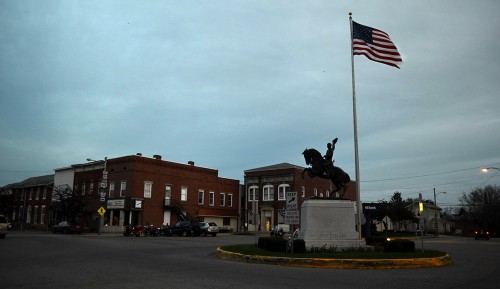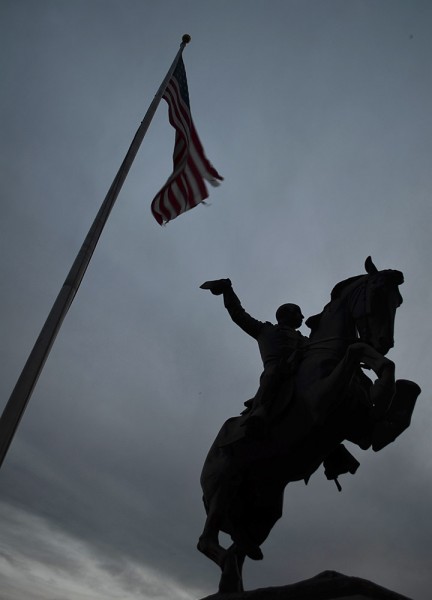 I drove 590.1 miles from Athens, Ohio, to Cape Girardeau on Sunday. While on the road, I listened to an audio book about World War II submarine warfare.
I drove 590.1 miles from Athens, Ohio, to Cape Girardeau on Sunday. While on the road, I listened to an audio book about World War II submarine warfare.
That was an appropriate topic because, except for about the first 20 miles and the last 75 miles, it felt like I was IN a submarine. The rain varied between light to “Holy Cow! I can’t see.” Then, somewhere around Louisville, the Holy Cow rain mixed in with road spray and fog.
So, what does that have to do with the statue of Civil War General Phillip H. Sheridan’s statue in the Somerset, Ohio, town square?
Did Sheridan die in battle?
 To be honest, my brain is fried and I either had to skip a day or post something that didn’t take much research.
To be honest, my brain is fried and I either had to skip a day or post something that didn’t take much research.
Sheridan was a local Somerset boy, and his statue is near where his house was. I asked Curator Jessica if she could remember the “horse code” that says the number of legs in the air indicate the way the rider died. I don’t recall her exact answer, but Snopes set me straight. If the leg count equals death status, it’s more likely to be coincidence than plan.
For example, Somerset’s statue of Sheridan has both front legs off the ground. According to the urban legend, that would indicate that he died in battle. A statue of him on Sheridan Circle in Washington, D.C., has a horse with all four hooves on the ground, which is supposed to signify that he died of other causes. In Sheridan’s case, the Washington statue would be correct. He died of heart failure.
Waiting for the bird to fly
Photography is all about capturing the moment. By the time we finished dinner, it was getting pretty dark, but Jessica wanted to walk up to see the statue up close.
I stood there patiently waiting for two things:
- A puff of wind to come along to bring the flag to life
- The bird to fly off the horse’s head so I could capture it in midair.
The flag finally moved, but, after several minutes of waiting, I discovered that the “bird” was the horse’s ear, and it wasn’t EVER going to fly away.
